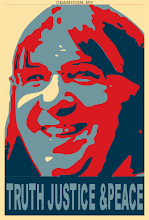Silent, Weird, Beautiful

The NY Times has an interesting article about Philly's City Hall, People Stop Fighting Philadelphia City Hall, the building that rests under Billy Penn in the center of town. As the article notes:
City Hall has always been an impressive sight. It remains the loftiest masonry load-bearing building in the world, supported not by a steel skeleton but by stone and brick stacked upon more stone and brick. Its 548-foot tower — surpassing all the cathedrals of Europe — is topped by the largest statue on any building, anywhere: a 37-foot-high William Penn, the city’s founder, standing as tall as a town house. It is said to have the largest clocks on any building; it would loom over Big Ben.With about 27 acres of floor space, this behemoth is bigger than every other municipal seat in the nation, all 50 state capitols and the national Capitol. The American Institute of Architects called it “perhaps the greatest single effort of late-19th-century American architecture.”
It was a striking act of civic hubris. Philadelphia wanted a symbol of its national stature and industrial might: the world’s tallest building. The colossus took so long to complete that it never fully won the title; the Washington Monument, not technically a building, is nonetheless seven feet taller, and it was finished first. Then, with construction still humming in Philadelphia, the Eiffel Tower topped them both.
* * * *
It is thought to be the most ornamented building in America, with at least 250 sculptures. Or more. No one, apparently, has ever counted them. How this great stone population of civic founders, allegorical figures and wildlife came to roost on its marble cliffs and in its granite caves is an enduring mystery that Mr. Myers and his associates hope to solve.
There was little sculpture in early plans; its role grew as the project proceeded. The works are credited to Alexander Milne Calder, grandfather of Alexander Calder, the painter and creator of the mobile. Aside from a virtually wordless catalog of the elder Calder’s plaster models, original documentation on the artwork is almost nonexistent.
“There may be a story hidden in this building, but we have yet to determine who designed that story and what it says,” Mr. Myers said.
Some of the building’s messages are direct enough, depicting history, government and law. Wagons with prisoners headed for trial would pass under a composition of works about becoming a better person: admonition from a mother scolding her child and forgiveness being granted by a father. The face of Sympathy gazes down.
In a particularly vivid bit of architectural staging, the accused were led to a bronze door that they would open by grasping its handle, a pair of great wriggling snakes, symbols of evil.
Others works are baffling, including a series of fierce cats pursuing mice. “Catch me if you can?” Mr. Myers wondered, noting their proximity to the prisoners’ entrance.
Another theory has it that they were a gift from Calder to the project’s overseer, Samuel Perkins, who loved cats. Others have suggested that the cats represent city government and the mice city taxpayers.
* * * *
Floodlighted at night, the building’s silhouette once again squares with the impressions of the poet Walt Whitman, who lived across the river in Camden, N.J. Observing its construction, he wrote that City Hall was “a majestic and lovely show there in the moonlight,” “silent, weird, beautiful.”
(Via Philadelphia Will Do). See also, Phillyist for a round up by local bloggers on the article. And don't miss philly for some great City Hall photography.
(Picture above is a shot I took while waiting for my daughter outside her school, Friends Select, on the Ben Franklin Parkway.)
UPDATE: phillyskyline.com also has some wonderful City Hall photos and mentions the Penn "curse" on the City -- which my daughter often refers to:
After taking thirty years to construct, City Hall remained the tallest building in Philadelphia for over 80 years thanks to a gentleman's agreement not to build taller than the brim of William Penn's hat. This was broken in 1983 when Liberty Property Trust announced they would build One Liberty Place (completed in 1987). Many--including lots of sports fans--say that Penn unleashed a curse upon the city. Since then, no major Philly sports team has won a championship.

No comments:
Post a Comment